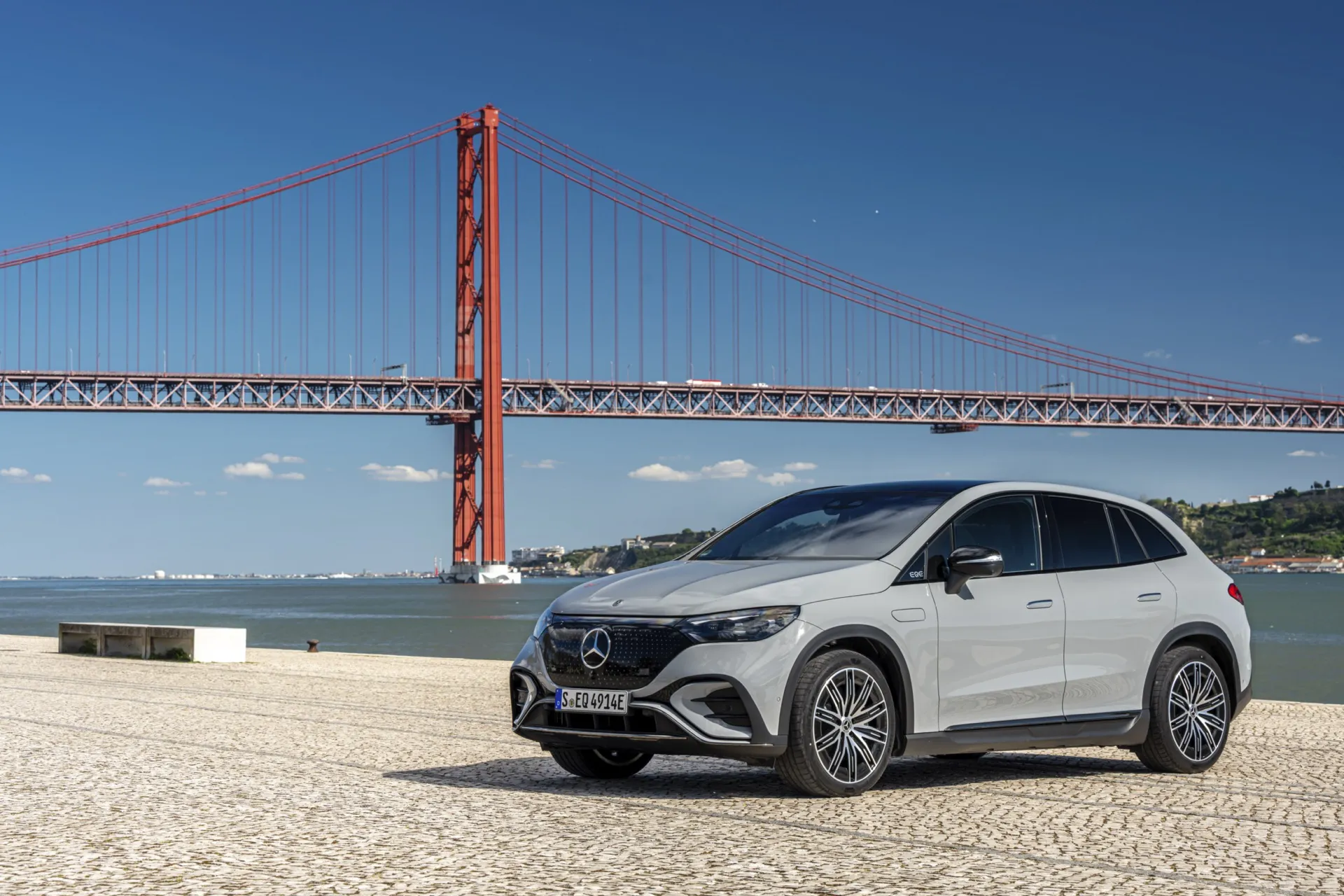The core of the EQE SUV is a 96.0-kwh battery pack instead of the larger 108-kwh pack used in the heavier EQS SUV. Like most Mercedes-Benz models, the EQE SUV comes in a multitude of drive configurations with distinct personalities, all driven by permanent magnet motors. Even in the single-motor base EQE 350+ SUV, it earns a point each for its electric acceleration and its planted handling. The AMG EQE SUV would earn an 8 here, at least.
The rear-drive EQE 350+ SUV has a 215-kwh motor with 288 hp and 417 lb-ft of torque. Mercedes says it scoots from 0-60 mph in 6.3 seconds, but we haven’t tested it yet. The dual-motor EQE 350+ 4Matic SUV shaves 0.1 seconds from that time, thanks to a second motor at the front axle that boosts total torque to 564 lb-ft, offsetting the weight gain from 5,300 to 5,635 pounds. The usable battery capacity drops to 90.6 kwh. It also has a heat pump and rear-axle disconnect to conserve energy while cruising.
The EQE 500 4Matic SUV would earn an additional point to an 8 here because of its prodigious power. The dual motors add up to 300 kw, and generate 536 hp and 633 lb-ft. That slings the EQE 500 SUV from 0-60 mph in 4.6 seconds.
Steering wheel paddle shifters enable four levels of regenerative braking, and paddling all the way down leads to one-pedal braking. It can be a dramatic if not abrupt grab in one-pedal mode, and it simultaneously moves the brake pedal down as if to mimic what a foot would be doing. Mercedes says it has revamped this system for 2024 to be smoother and less…unnatural. Updates pending.
EQE SUV ride and handling
The midsize electric SUV accelerates lighter than its weight would suggest, and handles more evenly than most crossover SUVs its size. The ground clearance ranges from 6.9 to 9.0 inches, depending on the availability of the air suspension, and the short wheelbase with short overhangs could give it an edge over the off-road chops of the EQS SUV. We’ve stuck to pavement, where the EQE SUV’s front strut and four-link rear independent suspension better carves the road.
The available adaptive dampers and air suspension pair with Eco, Comfort, Sport, Individual, and Offroad drive modes to optimize the setup, and models with rear-axle steering noticeably cut corners under 37 mph, where the rear wheels turn up to 10 degrees in the opposite direction of the front wheels. It’s beneficial when parking or pulling a U-turn. Above that speed, the rear wheels turn in-phase with the fronts to a lesser degree for more high-speed stability on winding roads.
Sport mode buttons down the suspension, which otherwise tends toward comfort, and the steering feel remains communicative when needed but otherwise distant, like a great uncle.
EQE SUV AMG
The 2024 Mercedes-Benz AMG EQE SUV delivers not only alphabet soup but also heart-pumping performance for a five-passenger SUV. Its dual motors rate at 460 kw and wring out 617 hp and 701 lb-ft to easily offset its hefty 5,768 pounds. On a sprint or hustling through highway traffic or tapping into its potential beyond the exurbs, the AMG EQE SUV handles much smaller than its size.
A Dynamic Plus package spins those new motors to 677 hp and 738 lb-ft on its way to a 0-60 mph time of 3.4 seconds. It’s worth the $4,000. It hunkers down like a sprinter at the starting blocks then explodes in gut-dropping silence, unless the artificial sound is activated.
The AMG SUV sits 0.6 inches lower, and its thicker spoiler-clad bumpers add 0.6 inches to the car’s overall length, while larger air intakes improve airflow. It looks the part of the electric performance crossover, especially with the Night Package.
It has 21-inch wheels with low profile performance tires, and the standard rear-axle steering has 1.0 degree less counter-steer than the EQE 500 SUV because of it. Other standard suspension upgrades include an adaptive air suspension and active anti-roll bars front and rear. Stopping might be more important than going in a vehicle this size, so the AMG wears 6-piston calipers with 16.3-inch rotors up front and single-piston calipers with 14.9-inch rotors at the rear. A decoupling front axle spares battery charge by reducing friction losses.


